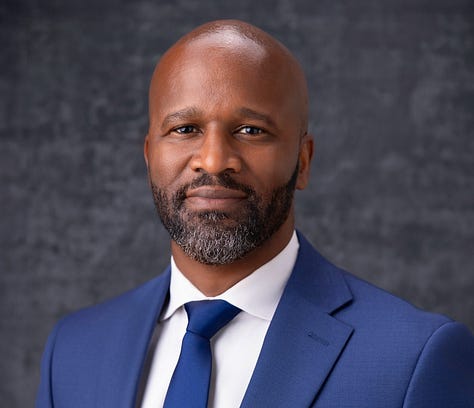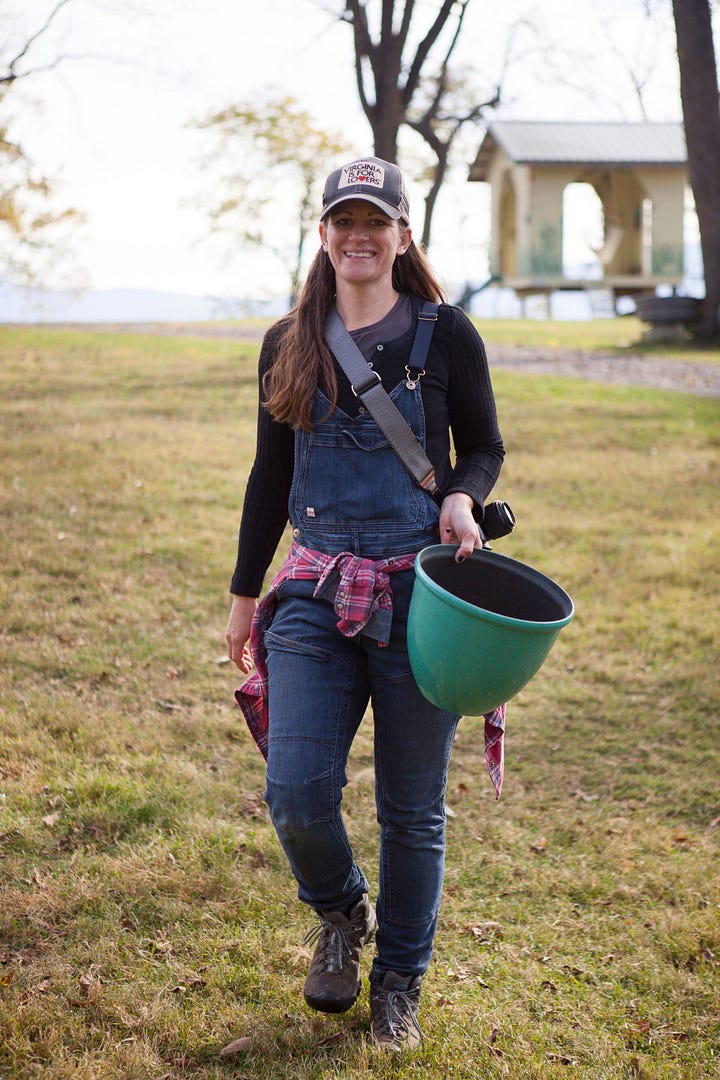How To Win Friends and Votes In Rural America
Local money, local organizing, local candidates, and local issues.
Former Missouri state representative Jason Klumb once believed, “The more you sweat, the more votes you get.” Twenty-three years old at the time, the Democrat knocked on 20 doors an hour, five days a week for six months in Missouri’s rural Bates, Vernon, and Cass counties. In November of 1992, he defeated the incumbent Republican state representative to win Missouri’s 125th District. Politically for Democrats, that year now feels like the Pleistocene era. Tactically, Klumb’s “sweat-to-vote” calculus is as sound in 2025 as it was in the Clinton era. But the Democrats’ rural strategy is what separates 1992 from 2024: they no longer have one.
For Lynlee Thorne, the political director for the Virginia-based Rural Ground Game, her party’s rural strategy amounts to, “We have the best policies, you dumb hicks.” She said rural Virginians constantly tell her, “I’ve never met a Democrat.” A thousand miles away in Humboldt, Kansas, Alana Cloutier hears similar sentiments from voters. “You are the first person to knock on my door since 2008,” they’ll tell the vice chair of the Allen County Democratic Party. Cloutier has become exhausted by the urban liberal mantra, “Why does rural America vote against their interests?” She replies, “It would help if Democrats appeared and talked about the issues.”
By now, the story is all too familiar. In 2024, Donald Trump won 62 percent of the rural vote, a four-point rightward shift from 2020. Trump beat Harris 60 to 40 percent in small metropolitan areas, and in America’s most rural quadrants, like Klumb’s 125th district, he rolled, 69 to 31 percent.
The big picture for Democrats in rural areas is grim today. However, it wasn’t always so.
Take Missouri, a state with a substantial rural population. In 2008, Barack Obama lost the state by just 3,903 votes. Though the counties he won were largely limited to the state’s two major metropolitan areas (St. Louis and Kansas City), he won respectable margins for a Democrat (close to 40 percent) in places like Bates, Vernon, and Cass, which set him up to nearly carry the state. But 16 years later, Republicans have widened those rural margins by 30 to 40 points. Trump won Missouri last year by 18 points, 58 to 40 percent, and earned a whopping 80 percent in Klumb’s home county of Bates. Lynda Jones, the Democratic nominee for the statehouse that cycle, earned a paltry 16 percent of the vote.
Missouri is just one example of how a former swing state turned ruby red because rural voters abandoned the Democrats. This shift has helped tilt the House, Senate, Electoral College, and even state legislatures in favor of Republicans. Democrats have only about 300 county chairs in a nation of 3,244 counties. In the face of this landscape, Cloutier has urged Democrats to “apologize to Howard Dean [for ignoring] his 50-state strategy as DNC Chair.” With apologies to Dean, Democrats need a 3,244-county strategy.
Tactics are not strategy. Klumb’s 1992 door-knocking tactic worked because underneath the sweat and labor, he had a larger plan for representing his district. In contrast, in 2024 volunteers bused themselves to battleground states where they knocked on 42.6 million doors with no plan whatsoever. Jim Hightower, the iconic Texas populist, told me, “You don’t know the language, the issues, the backroads, or the locals. You don’t know the place. You are a tourist.” Indeed, some strategies, like importing out-of-state volunteers, have diminishing returns: Kamala Harris lost all seven battleground states.
Thorne outlined the basics of a good rural strategy. “Direct voter contact. We need more of that. But seed the ground before we get to those doors.” Seeding the ground entails local money, local organizing, local candidates, and local issues. Once you have that, Thorne sighed, “The number one thing is being seen so that people see you give a damn about them.”
Giving a damn by showing up is complementary to a larger rural strategy. The Rural-Urban Bridge Initiative (RUBI) is already preparing this ground and training Democrats to “think differently, talk differently, and act differently.” Anthony Flaccovento told me RUBI has already completed scores of trainings with thousands of local participants across 20 states.
To compete in every state requires an institutional presence at the local level. Jess Piper, the executive director of Blue Missouri, argues, “We start by being there, by being around more than a few weeks before an election.” Piper reminisced, “I remember the Democratic Clubs in every county. Clubs meant Democrats got together for potlucks where they discussed local politics and school boards.” The Democratic National Committee spends three percent of its funds in rural America. An exasperated Thorne said, “We don’t need 50 percent. But three percent? C’mon. What would it look like if we tried?” Cloutier seconds Thorne. “We need a full-time staff. We rebuild every two–four years.”
Kamala Harris raised over $1 billion for her presidential campaign, to no avail. Strategy, not money, is the Democrats’ larger problem. Change in the party’s couch cushions can fund state-level organizers. Ty Pinkins, the Democrat running against Mississippi’s incumbent Senator, Cindy Hyde-Smith, told me “If the national Democrats hired four staffers (one for each of Mississippi’s congressional districts) it would be a game-changer.” For a fraction of what the party spends on one Senate race, Democrats can build hundreds of county parties across 50 states. Then, Cloutier urges, “get out in the community.” Her Allen County Democrats organize a float for Humboldt’s Farm City Days Parade every year. They blast music, fly the American flag, and throw candy to onlookers. She said that even in her red county, “Everyone is nice to us. No one is going to boo the flag. If you are part of the community, people say, ‘I know her.’” The owner of the Hitching Post honky-tonk in Humboldt told me, “Everybody knows we are Democrats. It normalizes it. A conservative will say, ‘She’s a Democrat, but she knows her whiskey.’”
Cloutier, who ran for state representative in 2022, lost her contest, and by a wide margin (75–25 percent). But Thorne said that winning every contest is not the point. To her, there is a “moral imperative to challenge [Republicans’] entitlement to power” in rural America. Only when Democrats can consistently recruit candidates to run in red districts can they reclassify what victory looks like. “Redefine a win. In 70–30 districts, reduce the margin by one–two points. This is how you build local momentum. Change the metrics so candidates feel accomplished and pass the baton to build local Democratic momentum.” Cloutier described seeing this energy. After her race, a couple came to her bar and the husband admitted, “I’m like really conservative. I’ve never met a Democrat, but I voted for you.”
Democrats can’t expect to win big majorities in rural America for some time. But reducing their margins of defeat with rural voters will be a crucial part of any statewide success in places that aren’t already deeply Democratic. Said Piper, “You raise vote totals at the top of ticket by running down the ticket. Don’t start with flippable districts. Start with the reddest districts.” In 2008, Obama only lost rural counties in Missouri by a margin of 65 to 35 percent, which made him extremely competitive. But when Trump wins rural counties 80 to 20 percent, Democrats have no chance.
Piper cautioned, “Democrats have become too D.C.-focused.” Neighbors say of Piper, “She only talks about state and local stuff.” That is exactly her intent. She advises Democrats, “Stay local. All those policies are coming from your statehouse.” Klumb, now a lecturer at the Boston University School of law, could not agree more:
We have allowed others to lure us into debates over issues that aren’t relevant. We have leaned into the flashpoint issues that are critically important to a few people but aren’t critical to the folks I grew up with. They consume our politics.
A focus on local issues not only changes the conversation, it shows that Democrats are in sync with rural voters and their concerns.
Pivoting to the local is key. Cloutier said, “The national political scene is really nasty, [but] Kansas is a very pragmatic place.” This is Governor Laura Kelly’s formula in her two successful runs for office. Cloutier added, “Kansas loves to elect Irish female Democrats, California [by contrast] has had zero female governors.” For Democrats, local issues mean opportunity. School vouchers offer fertile ground for this. Pushed by GOP elites but opposed by rural Republican voters, vouchers move public money from local public school systems to private schools. Dale Hutcherson, the Republican mayor of Tennessee’s rural Weakley County, told me vouchers lead to school consolidation and are “small-town killers.” Democrats and rural Americans can make common cause out of supporting rural public education.
Beyond schools, there is also housing. As is the case in much of America, affordable housing is a major concern for residents of Humboldt. Cloutier explained that rural America cannot replace its aging housing stock. “You have to build a home at a loss [in Humboldt]. It costs $200,000, at least, to build. People don’t make that kind of money.”
Healthcare offers yet another opportunity. In Tennessee, Medicaid and TennCare cuts have reduced trauma-care capacity at rural hospitals. Life-flighting rural Tennesseans to Memphis, Knoxville, and Nashville trauma centers is now routine healthcare, which can be prohibitively expensive. In 2023, Richard Garlitz, a resident of the city of Martin, was chased by a dog while bicycling near his home. Because his local hospital has a low-level trauma care unit, a bicycle accident landed him on a $92,000 helicopter ride to Nashville’s Vanderbilt University Medical Center. Luckily, he, like many middle-income rural Tennesseans, routinely pay extra for Air Evac life-flight insurance. In rural America, a bicycle ride can lead to financial ruin. That’s a potent issue. And one that is even more compelling as congressional Republicans look to slash Medicaid spending.
But Democrats can’t capitalize if rural Americans don’t trust them. Since Trump’s rise, urban progressives have aimed their ire at his rural base—to devastating effect. Piper said bluntly, “Liberals hate rural people.” The rural organizer and self-described progressive is constantly told by urban counterparts, “You got what they voted for.” Lisa Pruitt, a law professor at UC-Davis, who studies “rural bias” in the law, told me, “Among the left in an urban milieu, people acquire social capital by bashing rural and working people. There are perverse incentives to malign Trump voters.” In their 2024 bestselling White Rural Rage, author Tom Schaller and Paul Waldman exemplify this. The duo sold scads of books and garnered loads of media attention for a thinly researched work of rural bashing.
To redress this, Thorne has launched the Storyteller Project. With a bit of training, a cell phone, and lighting, Thorne interviews “authentic [rural] voices” for digital ads that feature “real voices, local people, talking about the issues.” Instead of bashing Trump country, Thorne urges Democrats to tell the “stories of people we are fighting for.” To her, the way back is a focus on the “90 million who don’t show up. If they are working two jobs and have only seen their standard of life declining, why should they care?”
Thorne, like Klumb in 1992, understands that local money, local organizing, local candidates, and local issues ensure that “when a Democrat knocks on your door—they [the voter] are ready” to receive the message. For Democrats in rural America, going local is the only way back.
Jeff Bloodworth is a professor of history at Gannon University (Erie, PA). Bloodworth holds a Ph.D. in modern United States history from Ohio University’s Contemporary History Institute.











My perspective is that of a traditional (authentic) Democrat now living in a rural area. My former party advocated for the working class and was largely effective for a time because underneath it all was an abiding respect for the common man. I didn't find your money quote until 3 paragraphs from the end - “Liberals hate rural people.” Prior to that what I read was an analysis of process, organization, and perceptual manipulation, none of which effectively address the problem of liberal bigotry. Nobody joins a group where they don't feel welcome.
Wyoming and Montana have both in recent times elected Democratic governors. If Democratic candidates are in the same place on most issues as the voters, they stand a better chance of being elected.
Every candidate is going to be asked about guns, especially semi autos. Before any candidate gives one speech they should have that issue sussed up complete with a genuine opinion that uses non offensive vocabulary and doesn't cross any red lines. Most candidates blow this question because they ask the opinion of people like Tim Walz. Nothing is more fake than a Democrat trying to sound gun friendly by talking confiscation.
Amy Klobuchar has quietly earned support in the rural parts of Minnesota by voting the right way on an issue foundational to rural MN that flies completely under the radar in most of America. Wolves. Minnesota's moose population has been decimated but not due to any votes by Klobuchar.
A Democrat who is elected to a rural congressional district is going to have to be genuinely outside the mainstream of the party on some issues, get over it. If we had a couple more southern redneck anti abortion senators in 2015 Row would still be the law of the land, and Merrick Garland would be a supreme. Trump is able to push through the less appealing parts of his budget unimpeded for lack of two congressmen.
Senate and House majorities are made from a big tent.